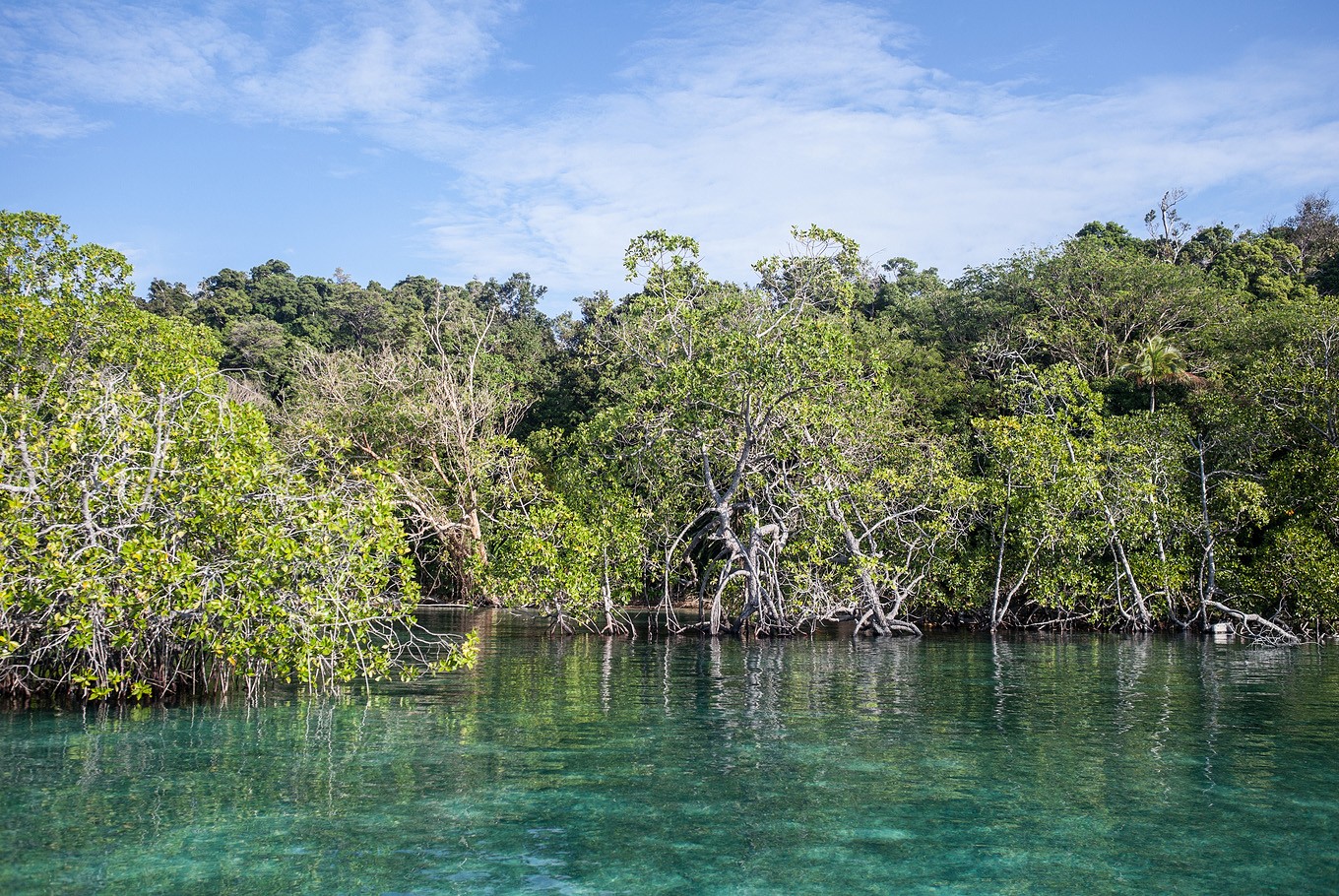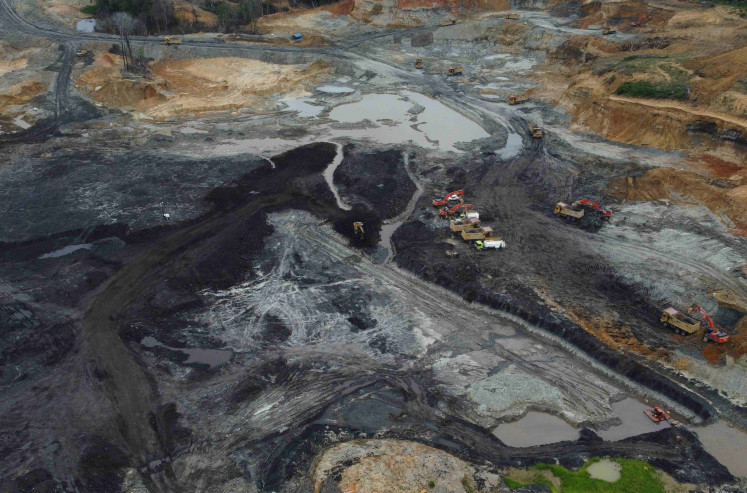Popular Reads
Top Results
Can't find what you're looking for?
View all search resultsPopular Reads
Top Results
Can't find what you're looking for?
View all search resultsFate of mangroves lies in shrimp aquaculture
Indonesia has the largest areas of mangroves in the world. Unfortunately, the country’s shrimp industry is causing massive mangrove deforestation.
Change text size
Gift Premium Articles
to Anyone
M
angroves are extremely important for mitigating global climate change and protecting communities from storm surges, coastal erosion and tsunami. They also provide food, building materials and medicine.
Indonesia has the largest areas of mangroves in the world. Unfortunately, the country’s shrimp industry is causing massive mangrove deforestation.
In a study for which I am one of the researchers, we contend that mangrove conservationists in Indonesia should work together with shrimp producers to save mangroves. Here is why.
For Indonesian, mangroves are crucial for the local economy. They directly support shrimp industries that earn about US$1.5 billion annually from exports alone, supporting the livelihoods of more than 1 million Indonesian people.
The facts showed that shrimp is the most important species in the country’s fishery sector.
Unfortunately, the benefits of shrimp come with costs, particularly to the mangrove ecosystem. Our study suggested that Indonesia’s mangrove area shrank from about 41,000 square kilometers in 1800 to 31,000 sq km today, mostly because of shrimp aquaculture.
There were many events that led to the disappearance of mangroves in the past, but the real tragedy occurred in 1998 when the Asian financial crisis devalued the Indonesian rupiah and consequently increased the value of exported shrimp in local currency.
At the same time, there was a world shortage of shrimp caused by a virus in shrimp farms elsewhere.
As a result, communities rushed to convert mangroves into shrimp ponds on an unprecedented scale to meet the demand for shrimp. In less than five years, the new shrimp farms had converted more than 4,000 sq km of mangroves, a scale that took decades in the previous shrimp farm expansion era.
The loss and degradation of mangroves had a dramatic impact on both the environment and the economy. Globally, an extra 0.19 Pg of carbon dioxide was released into the atmosphere annually from the disturbed ecosystem, equivalent to the emissions from the Australian electricity, gas and water supply sector.
Locally, degraded mangroves exposed settlements and community assets to coastal erosion, wave inundation, storms and decreased fisheries productivity.
Shrimp aquaculture is not only Indonesia’s most important fishery sector, but it is also the most dangerous threat to the country’s mangroves.
Demand for shrimp is always high and is set to double by 2030, amounting to 600,000 tons a year for Indonesia. Statistically, this may not be a problem as Indonesia currently has about 8,000 sq km of shrimp ponds to fulfill this projected demand.
But the problem is shrimp pond productivity.
Despite the current government’s efforts to improve this situation, in the last five years Indonesia produced average of 400,000 tons per year and managed to export about 160,000 tons a year.
Large ponds are not in production because of technical and financial problems.
Only 6,000 sq km are active and most of them are traditional farms on the east coast of Kalimantan. The farms are unusually producing less than 100 kg per ha per year because the farmers lack the technical capacity to deal with the unique environmental conditions.
The best managed and resourced ponds at the same region could produce up to six times this much.
If the government continues with its current business-as-usual approach to shrimp farm production, high shrimp demand will continue enticing farmers to convert more and more mangroves into shrimp ponds, the easiest and least expensive way to increase production.
Our analysis showed that another 6,000 sq km of mangroves are in danger of conversion in the next two decades to balance the shrimp demand and production.
There is another danger present: oil palm plantations. Overlayed maps of oil palm plantation concession areas and mangroves areas in Indonesia revealed that the government has allocated more than 1,100 sq km of mangroves for plantations.
With this allocation, future concession holders could convert mangroves into oil palms with few legal constraints.
The Indonesian government actually has always showed favoritism to conserve mangroves. This can be seen in the creation of a (potentially) powerful institution to manage mangroves effectively, a multi-stakeholder group named the National Coordination Team for Mangrove Management (KKMN).
The KKMN’s task is to oversee implementation of Presidential Regulation No. 73/2012, the National Strategy for Mangroves Management (SNPEM), which operates under a no-net-loss principle to halt the loss of mangroves.
Unfortunately, the SNPEM approach is a business-as-usual strategy and fails to identify the seriousness of the shrimp farm threat. In fact, both shrimp farm expansion and oil palm plantation issues are nearly absent from the document.
Without straightforward policy intervention over the issues, the SNPEM could fail to prevent a repeat of the past tragedy.
The world shrimp demand would most likely continue increasing over the next two decades. To deal with the situation, Indonesia’s mangrove conservationists should make peace with their adversaries, the shrimp producers.
By helping them put the current shrimp production system back on track, shrimp producers would not only satisfy demand but also restore vast abandoned farms back into being mangroves.
We estimate that government investment to improve shrimp production alone could avoid the disappearance of 6,000 sq km mangroves in two decades.
If the effort is combined with revoking oil palm concessions on mangrove areas and maintain other threats (urban development, timber exploitation and mining) at a moderate level, the potential loss of mangroves may be reduced to only 230 sq km in the next two decades.
***
The writer is a doctoral researcher at the University of Queensland, Australia, and senior advisor at Wetlands International Indonesia.
---------------
We are looking for information, opinions, and in-depth analysis from experts or scholars in a variety of fields. We choose articles based on facts or opinions about general news, as well as quality analysis and commentary about Indonesia or international events. Send your piece to community@jakpost.com. For more information click here.










